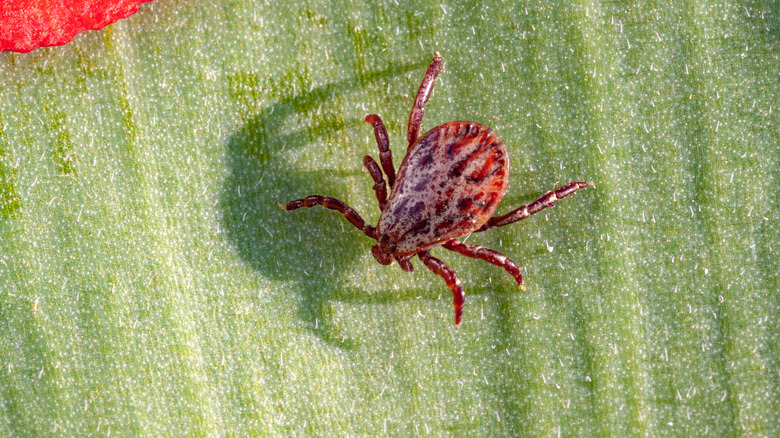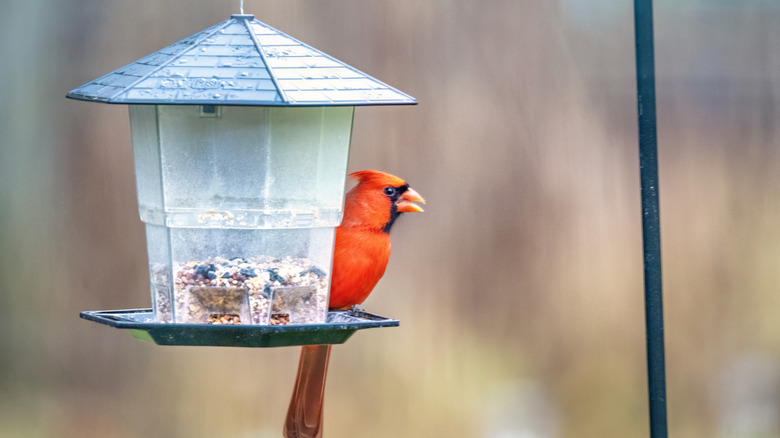Why Your Bird Feeder Might Be Attracting Chiggers
We may receive a commission on purchases made from links.
Your bird feeder may be unintentionally creating the perfect home for tiny mites called chiggers. These nearly invisible pests can grab birds and use them as transportation. They love to hang out in the vegetation and debris that surrounds feeding areas, just waiting to latch onto an unsuspecting host. Chiggers are drawn to bird feeders for several reasons. The constant rotation of birds and small animals creates perfect hosts for them to grab on to, the available food and seed that spills out, and any overgrown grass areas around them offer perfect hiding spots. During peak season, usually late spring through early fall, these areas will become hot spots for mite activity, putting both birds and humans at risk of their irritating bites.
The connection between bird feeders and chiggers stems from the mite's life cycle. Adult chiggers lay eggs in moist soil, and the larvae climb the vegetation to await hosts, exactly the conditions created by poorly maintained feeding areas. When birds perch on a feeder or forage on the ground, they inadvertently transport chiggers to new locations. This problem only gets worse when feeders are placed near tall grass or damp areas where chiggers can proliferate. Luckily, there are many ways to get rid of chiggers in your yard and recognizing this connection is the first step in creating a bird-friendly space that does not double as a happy home for mites.
Creating a chigger-free zone around your bird feeders
Transforming your bird feeding area into a chigger-resistant space requires some strategic changes and routine maintenance for both the feeder and your yard. It is best to place feeders at least 10 to 15 feet from vegetation, preferably on paved or mulched surfaces that are easier to keep clean. Be sure to regularly sweep up the area for spilled seeds and messes created when the birds eat. This helps remove any moist organic matter that chiggers need to thrive. Consider replacing natural grass with gravel beneath the feeders as this material will dry quicker and offer fewer hiding spots. You can also plant some chigger-repellent plants nearby to help ward off the little critters. If you do keep the feeding station over regular grass, make sure to keep it trimmed short since tall blades provide the perfect perch for mite larvae to await their prey.
If you already have a chigger infestation, target treatments can help break the life cycle without harming birds. Food-grade diatomaceous earth sprinkled lightly around the feeder dries mites out naturally. During peak chigger season consider switching over to no-waste seed blends, like this Kaytee Wild Bird No Mess Seed from Amazon, to minimize spillage. You can also get a tray bird feeder, which is much easier to clean and will help reduce messes on the ground below. Be sure to clean your feeders once a week as well to remove any little hitchhikers that have made it up there. All these things will allow you to continue enjoying your backyard birds without the risk of chiggers for both you and your feathered friends.

